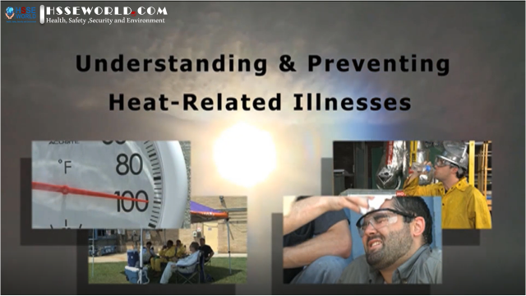In today’s fast-changing business world, managing workplace performance and safety is key. Companies need to stay ahead by boosting productivity, cutting risks, and creating a great work place. A detailed and strategic plan for managing performance and safety is vital. Workplace performance and safety go hand in hand. High-performing teams and individuals help make a safer, more productive work place. By setting clear goals, giving ongoing feedback, and encouraging accountability, companies can help their employees do their best. They also keep their well-being and safety first.
This article covers the basics of performance management. It looks at ways to build a safe and accountable work culture. It also shares practical tips to tackle performance challenges. By using data and technology, companies can achieve more efficiency, innovation, and happiness among their employees.

Key Takeaways
- Effective workplace performance management enhances productivity and reduces risks.
- Establishing clear performance standards and expectations is crucial for employee success.
- Fostering a culture of safety and accountability promotes a thriving work environment.
- Identifying and addressing performance-related anxiety can boost employee resilience.
- Integrating technology in performance and safety management can drive continuous improvement.
Understanding the Foundations of Workplace Performance Management
Effective workplace performance management is key to any successful company. It’s a system that helps everyone in the organization reach their goals. At its core are three main parts: performance standards, leadership, and clear expectations.
Key Components of Performance Management Systems
A good performance management system has a few important parts:
- Clear performance standards and KPIs that match the company’s goals.
- Regular reviews and feedback to check on employee progress and find areas to get better.
- Chances for professional growth, training, and skill-building to help employees do their best.
- Programs that reward and recognize top performers.
Role of Leadership in Performance Management
Strong leadership is vital for a successful performance management system. Leaders do a lot, including:
- Telling employees about the company’s vision, mission, and goals.
- Making sure performance standards and expectations match the company’s goals.
- Giving regular feedback, coaching, and mentoring to help employees grow.
- Recognizing and rewarding employees who do great work.
Setting Clear Performance Standards and Expectations
Setting clear performance standards and expectations is crucial. This means:
- Creating specific, measurable, achievable, relevant, and time-bound (SMART) goals for each employee.
- Ensuring these goals match the company’s overall strategy.
- Telling employees about these standards and expectations clearly and openly.
- Updating these standards regularly to keep them relevant and achievable.
By grasping the basics of workplace performance management, companies can build a culture of accountability, ongoing improvement, and top teams.
Creating a Culture of Safety and Accountability in the Modern Workplace
In today’s fast-paced, tech-driven work environments, creating a safe and accountable culture is key. It’s vital for employee well-being and the success of the organization. By focusing on safety culture and workplace accountability, leaders can help their teams succeed in the modern workplace.
At the core of a strong safety culture is employee engagement. When workers feel empowered to spot and fix potential dangers, they become part of keeping the workplace safe. This shared responsibility boosts safety and makes team members proud of their work.
Management also plays a big role in promoting a safety-first mindset. Leaders set clear safety rules, offer thorough training, and show they care about their employees’ well-being. By making safety a part of daily work, companies can create a culture where safety is a priority, not just a checkbox.
“A strong safety culture is not just about compliance; it’s about empowering employees to be active contributors to a safer workplace.”
Moreover, a culture of accountability makes sure everyone is responsible for their actions and their impact on the workplace. This sense of responsibility motivates people to solve problems early, preventing bigger issues later.
Creating a workplace that values safety and accountability brings many benefits. It improves morale, reduces absences, and boosts productivity. As the workplace changes, being able to maintain a safe and accountable culture will set successful companies apart.
Strategies for Overcoming Performance Anxiety at Work
Workplace performance anxiety can really hold you back. It affects how well you do your job, how happy you are at work, and your overall health. To beat this, you need to know what causes it and how to deal with it.
Identifying Triggers of Workplace Anxiety
Finding out what makes you anxious at work is the first step. It might be tight deadlines, speaking up in meetings, fear of not doing well, or problems with coworkers. Knowing what stresses you helps you find ways to handle it better.
Practical Coping Mechanisms for Performance Stress
- Try relaxation methods like deep breathing, meditation, or muscle relaxation to calm down when stressed.
- Regular exercise helps release tension and boosts your mood.
- Talking to coworkers, managers, or mental health experts can help you deal with tough work situations.
- Make sure to take care of yourself by sleeping well, eating right, and taking breaks.
Building Resilience in High-Pressure Environments
Being resilient is key in stressful work settings. This means having a positive mindset, setting realistic goals, and celebrating your achievements. A positive attitude helps you face challenges head-on and boosts your confidence to beat performance anxiety at work.
“The only way to do great work is to love what you do. If you haven’t found it yet, keep looking. Don’t settle.” – Steve Jobs
By using these strategies, you can manage workplace performance anxiety and grow stronger in your job. Stress management is vital for staying productive and happy in today’s fast-paced world.
Implementing Effective Workplace Performance Management
Effective workplace performance management is key for employee growth, better productivity, and aligning personal goals with company aims. To set up a strong performance management system, follow a structured plan. This plan should include several important parts.
Start by setting clear, measurable goals and expectations. Work with employees to create SMART (Specific, Measurable, Achievable, Relevant, and Time-bound) goals that match the company’s strategy. Regular feedback and coaching are vital for tracking progress and offering timely advice to boost workplace performance.
Regular performance reviews are also crucial for performance management. These reviews should highlight strengths, tackle areas for performance improvement, and create tailored employee development plans. This way, organizations can build a culture of ongoing learning and growth.
| Key Elements of Effective Workplace Performance Management |
|---|
|
By setting up a detailed workplace performance management system, organizations can help their employees grow. This leads to better performance improvement and a more engaging work environment.
“Effective performance management is not just about evaluating past performance; it’s about unlocking future potential.”
Developing Safety Protocols That Enhance Productivity
Safety protocols are key in today’s workplace. They protect employees and boost productivity. By setting up strong safety measures, companies can help their teams work better and safely.
Risk Assessment and Mitigation Strategies
Good safety starts with a detailed risk assessment. Employers must look at possible dangers, how likely they are, and how bad they could be. Then, they create plans to lower these risks. This way, safety steps fit the company’s specific needs.
Employee Training and Safety Compliance
Teaching employees is vital for a safe workplace. Strong employee training covers emergency plans, using equipment right, and following safety rules. This builds a culture where everyone works safely and productively.
Monitoring and Improving Safety Measures
Keeping an eye on safety protocols is key. Companies should check their safety steps often, look at incident reports, and ask for employee feedback. This helps make safety measures better over time.
Creating strong safety protocols improves work life. It builds trust, engagement, and high performance. With good risk management, training, and constant improvement, businesses can reach their full potential.
Measuring and Tracking Performance Metrics
In today’s fast-changing work world, using data to manage is key for success. Performance metrics and Key Performance Indicators (KPIs) are at the heart of this approach. They give insights into how well people and teams work.
It’s important to set up performance metrics that fit your industry and job types. These metrics should cover many areas, like sales, customer happiness, and how well teams work together. By watching these KPIs closely, companies can spot where they need to get better. They can then use their resources wisely and make smart choices that boost their performance.
Aligning Metrics with Strategic Objectives
The secret to good performance metrics is making sure they match your company’s big goals. A strong performance management system links individual and team KPIs to the company’s main goals. This creates a culture where everyone is focused on making data-driven choices.
| Performance Metric | Relevance | Benchmark |
|---|---|---|
| Sales Revenue | Measure of overall business growth and profitability | 10% year-over-year increase |
| Customer Satisfaction Score | Indicator of product/service quality and customer loyalty | Average score of 4.5 out of 5 |
| Employee Turnover Rate | Reflection of workforce engagement and job satisfaction | Less than 10% annual turnover |
By always checking and studying these performance metrics, companies can find ways to get better. They can make choices based on data and build a culture of growth and responsibility.
Read: Key Performance Indicators-KPIs

“The most valuable asset of a 21st-century institution, whether business or non-business, will be its knowledge workers and their productivity.” – Peter Drucker
Integrating Technology in Performance and Safety Management
In today’s fast-paced world, using technology is key for better work performance and safety. Companies use digital tools to watch employee productivity and safety software to manage risks. These steps help them keep improving.
Digital Tools for Performance Monitoring
Modern performance management tech has cool features. It lets employers track and study employee work with accuracy. These tools give real-time data on how well tasks are done, time use, and productivity.
With this data, companies can spot where they need to get better. They can then make plans to improve performance.
Safety Management Software Solutions
Keeping employees safe is a big deal for today’s businesses. Safety software helps manage safety rules, report incidents, and follow laws. It makes safety processes smoother, helps spot risks, and encourages employees to be responsible.
Data Analytics for Performance Improvement
Using performance and safety tech creates lots of data. Advanced analytics help find important insights and trends. This way, companies can make smart choices to get better at work and safety.
This data-focused method helps businesses stay on top and keep their edge in the market.
| Technology | Key Benefits |
|---|---|
| Performance Management Technology |
|
| Safety Management Software |
|
| Data Analytics |
|
By using performance tech, safety software, and analytics, companies can make work better, safer, and more productive. This all-around approach helps businesses succeed and stay ahead in the fast-changing market.
Building a Supportive Environment for Peak Performance
In today’s fast-paced business world, creating a supportive work environment is crucial. It boosts employee engagement and builds a strong workplace culture. By focusing on your team’s well-being and growth, you can help them reach their best. This leads your organization to peak performance.
Effective communication is a key part of a supportive work environment. Encourage open talks where everyone feels safe sharing their thoughts and concerns. Regular meetings and feedback sessions help build trust and strengthen relationships.
Creating a culture of collaboration is also vital. Support teamwork and sharing knowledge to use everyone’s skills together. Activities and programs that bring teams together help build unity and camaraderie.
Don’t forget to invest in your employees’ professional development. Offer training and resources that match their career goals. Encourage them to take on new challenges and grow within the company.
“A supportive work environment is not just a nice-to-have; it’s a strategic imperative for organizations that want to attract, retain, and unleash the full potential of their talent.”
By focusing on a supportive work environment, you create a powerful link between employee engagement and workplace culture. This approach boosts productivity and performance. It also builds a loyal, motivated team ready for success.

5 Key Steps to Conducting Effective Contractor Safety Performance Evaluations
Addressing Common Performance and Safety Challenges
Workplaces often face challenges in keeping performance high and safety standards met. By tackling these issues head-on, businesses can grow and create a great work environment for their team.
Resolving Performance Gaps
It’s key to find and fix performance gaps to succeed. These gaps can come from poor training, unclear goals, or when skills don’t match the job. Leaders should talk openly, offer coaching, and create plans that help employees grow.
Managing Safety Incidents
Safety is crucial in any workplace. To keep it safe and productive, you need good safety plans, risk checks, and training. A safety-focused culture helps reduce incidents and keeps your team safe.
Creating Improvement Action Plans
Creating plans to improve is vital. These plans should be based on data, focusing on what needs work and how to fix it. It’s important to keep checking and updating these plans to keep improving.
“Addressing performance and safety challenges requires a multifaceted approach that prioritizes employee development, safety protocols, and data-driven decision-making.”
By tackling performance gaps, managing safety, and making detailed plans, businesses can build a strong base for growth and a great work place.
Best Practices for Continuous Performance Improvement
Keeping a culture of continuous improvement is key for companies wanting to boost efficiency and stay competitive. It’s about creating a place where employees can grow, get regular feedback, and adapt to new situations.
Setting up a strong performance management system is a top practice. It lets managers and employees share feedback often. This helps spot where things can get better and makes plans to fix them. Regular meetings and reviews keep track of progress and help employees grow.
Also, having a culture that loves learning and trying new things is important. It encourages employees to learn, share ideas, and try new methods. This makes a team that’s ready to change and stay ahead in the business world.
Read: Enhancing performance & health and safety culture(Opens in a new browser tab)



